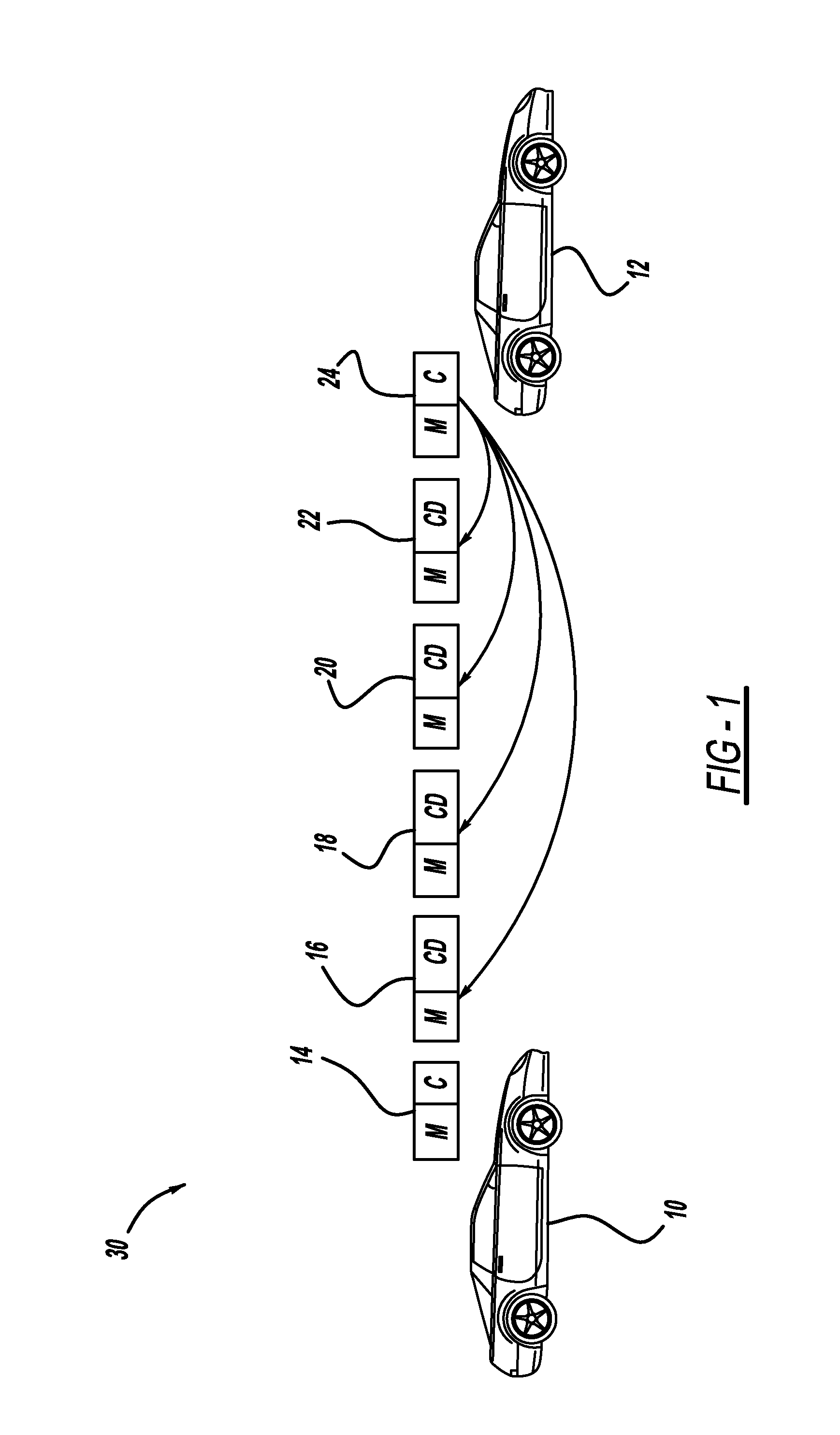Adaptive certificate distribution mechanism in vehicular networks using variable inter-certificate refresh period
a technology of inter-certificate refresh period and certificate distribution mechanism, which is applied in the direction of digital transmission, wireless communication, instruments, etc., can solve the problems of lost confidence in the use of v2v systems, messages are not successfully received by nodes, transmitted messages can be lost, etc., to improve the reliability and performance of vehicle-to-vehicle (v2v) networks, reduce the average message size, and optimize communication throughput
- Summary
- Abstract
- Description
- Claims
- Application Information
AI Technical Summary
Benefits of technology
Problems solved by technology
Method used
Image
Examples
first embodiment
[0025]In a first embodiment, the inter-certificate refresh period L is varied to adapt to current V2V network conditions. Referring again to FIG. 1, the two goals to be balanced are minimizing security-related communications overhead, while maximizing V2V message throughput. It is desirable from an overhead minimization standpoint to increase the value of L; that is, to use relatively more certificate digests and fewer certificates. However, this strategy guarantees that more messages will have to be buffered by receiving nodes before being used in their application software, and it increases the potential negative impact of a dropped certificate-carrying packet—possibly leading to the loss of useful information. On the other hand, reducing the value of L increases the amount of overhead due to security-related data on a per-message basis, and could increase the chance that any particular message will be lost in a congested network.
[0026]Many factors can affect the performance of a ...
second embodiment
[0033]In a second embodiment, Forward Error Correction techniques can be used, where a certificate is divided among several packets, and the certificate can be reconstructed even if some packets are lost by the receiver. Forward Error Correcting (FEC) codes can be used as a means to recover data in lossy environments. By over-sampling the input data, FEC codes create data larger than the input, such that the loss of a few data segments in transmission will not prevent the receiver from reconstructing the original data completely. Applied to the problem of certificate transmission in V2V networks, FEC codes offer a mechanism for receiving nodes to reliably recover certificates, thus reducing the information blockage to the application layer and reducing the need for re-transmission of data. Two different types of FEC codes—Erasure Codes and Fountain Codes—are proposed.
[0034]FIG. 3 is a diagram of a schema 60 showing how erasure codes are used to encode and decode data. Erasure codes ...
PUM
 Login to View More
Login to View More Abstract
Description
Claims
Application Information
 Login to View More
Login to View More - R&D
- Intellectual Property
- Life Sciences
- Materials
- Tech Scout
- Unparalleled Data Quality
- Higher Quality Content
- 60% Fewer Hallucinations
Browse by: Latest US Patents, China's latest patents, Technical Efficacy Thesaurus, Application Domain, Technology Topic, Popular Technical Reports.
© 2025 PatSnap. All rights reserved.Legal|Privacy policy|Modern Slavery Act Transparency Statement|Sitemap|About US| Contact US: help@patsnap.com



